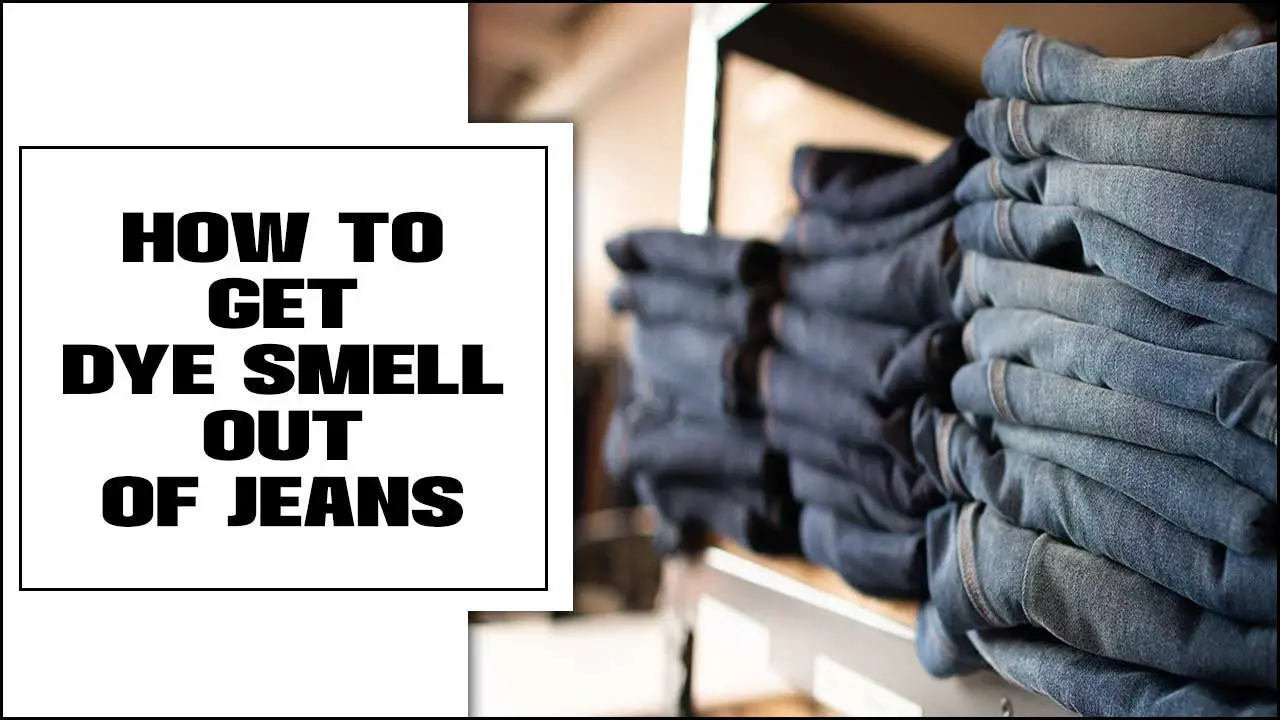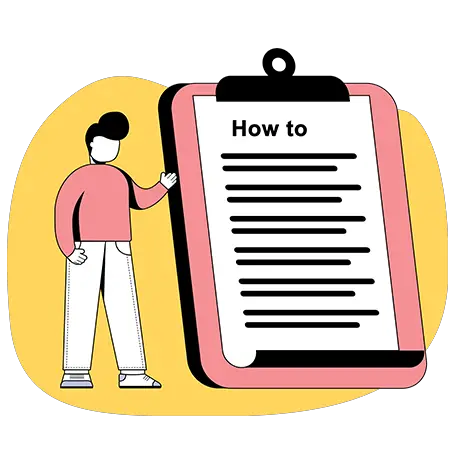Hemming jeans is a practical skill that can save both time and money, allowing you to achieve a customized fit without the need for costly tailor services.
While many may opt for machine hemming due to its speed and convenience, hand hemming offers a level of precision and care that can enhance the overall aesthetic of your garments. This method is particularly beneficial for those who appreciate the artistry of sewing and wish to maintain the integrity of their favorite denim pieces.
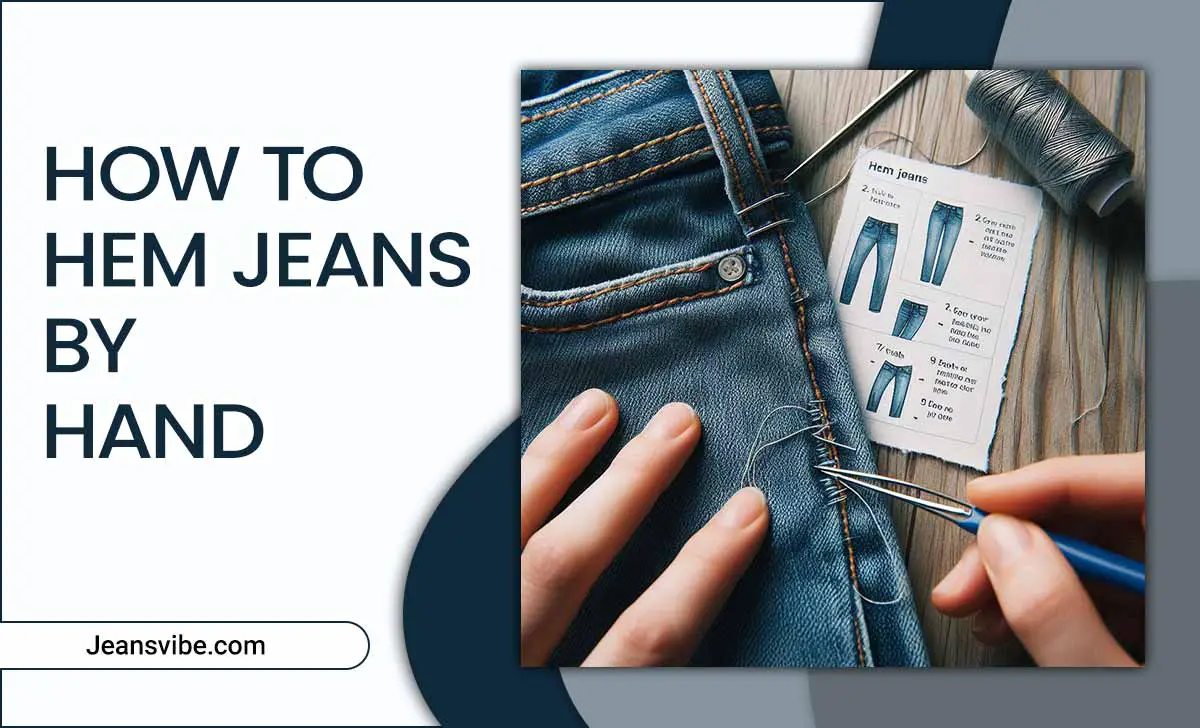
How To Hem Jeans By Hand – Step-By-Step
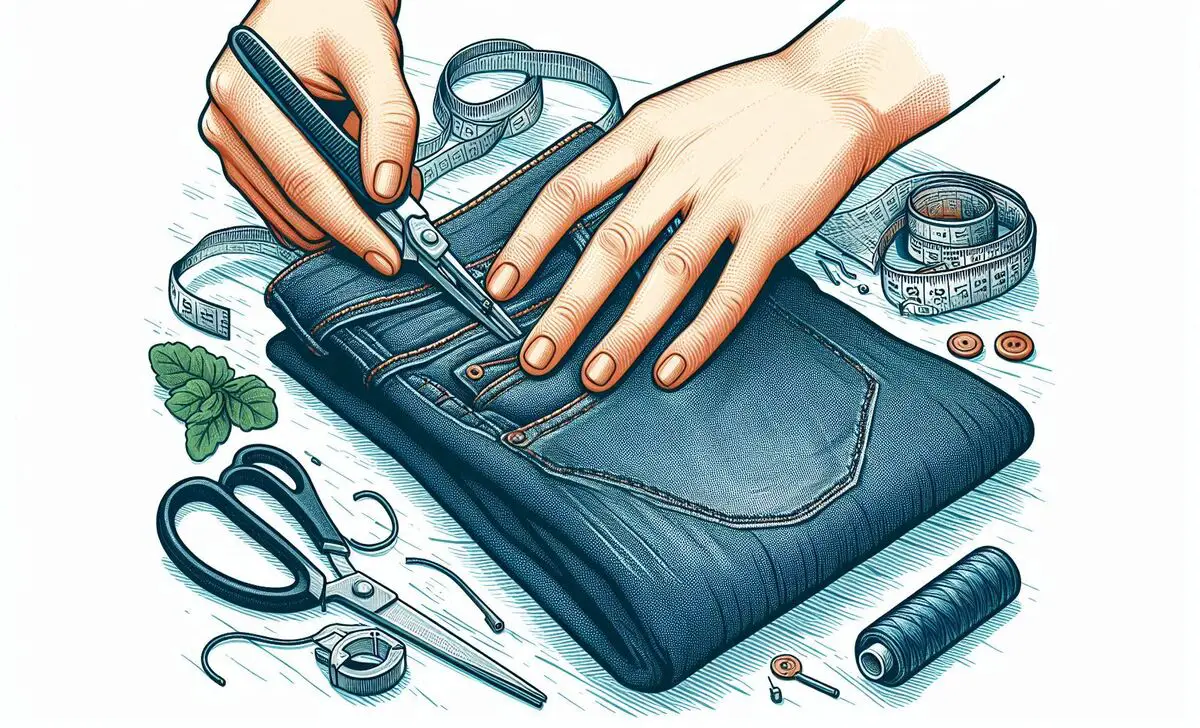
Hemming your jeans by hand is a practical skill that can save you time and money while ensuring your jeans fit perfectly. Whether you’ve bought a pair that’s a bit too long or you want to refresh an old favorite, learning to hem jeans allows you to make alterations that suit your personal style and comfort.
Tools You’ll Need
Before you start, gather the necessary tools:
- Needle: A heavy-duty needle designed for denim.
- Thread: Matching or contrasting thread, preferably strong and durable.
- Scissors: Sharp fabric scissors for cutting denim.
- Pins: Sewing pins to hold the hem in place.
- Measuring Tape: To ensure accurate length.
- Chalk or Fabric Marker: For marking the hemline.
- Iron: For pressing the hem.
- Thimble (optional): Protects your finger when pushing the needle through thick fabric.
Understanding Hemming Techniques
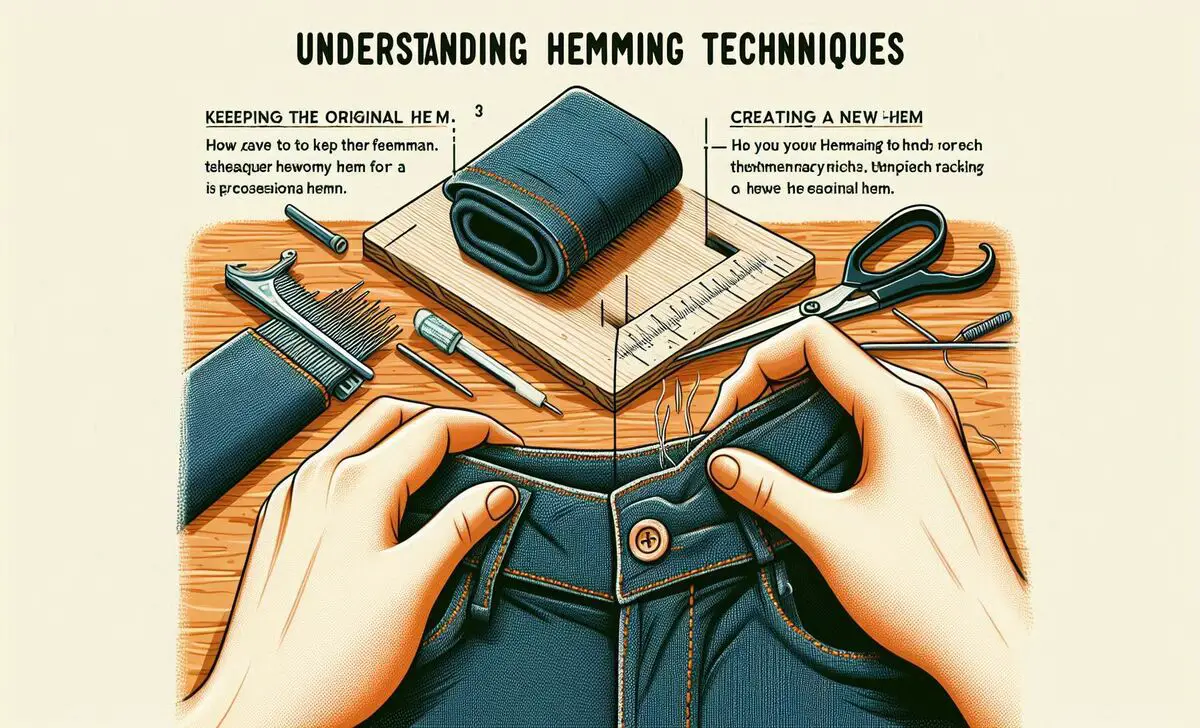
There are two main techniques for hemming jeans by hand:
- Keeping the Original Hem: This method allows you to keep the factory hem for a professional look.
- Creating a New Hem: This option is ideal if you prefer a clean, new hem without the bulk of the original.
Measuring The Correct Length
- Try on the Jeans: Wear the jeans with the shoes you plan to pair them with. This helps you determine the correct length.
- Mark the Desired Length: Use a chalk or fabric marker to indicate where you want the hem to fall. It’s best to mark it slightly longer than you think to allow for adjustments.
- Allow for Shrinkage and Footwear: Consider any potential shrinkage from washing or how the jeans will sit over your shoes.
Preparing The Jeans For Hemming
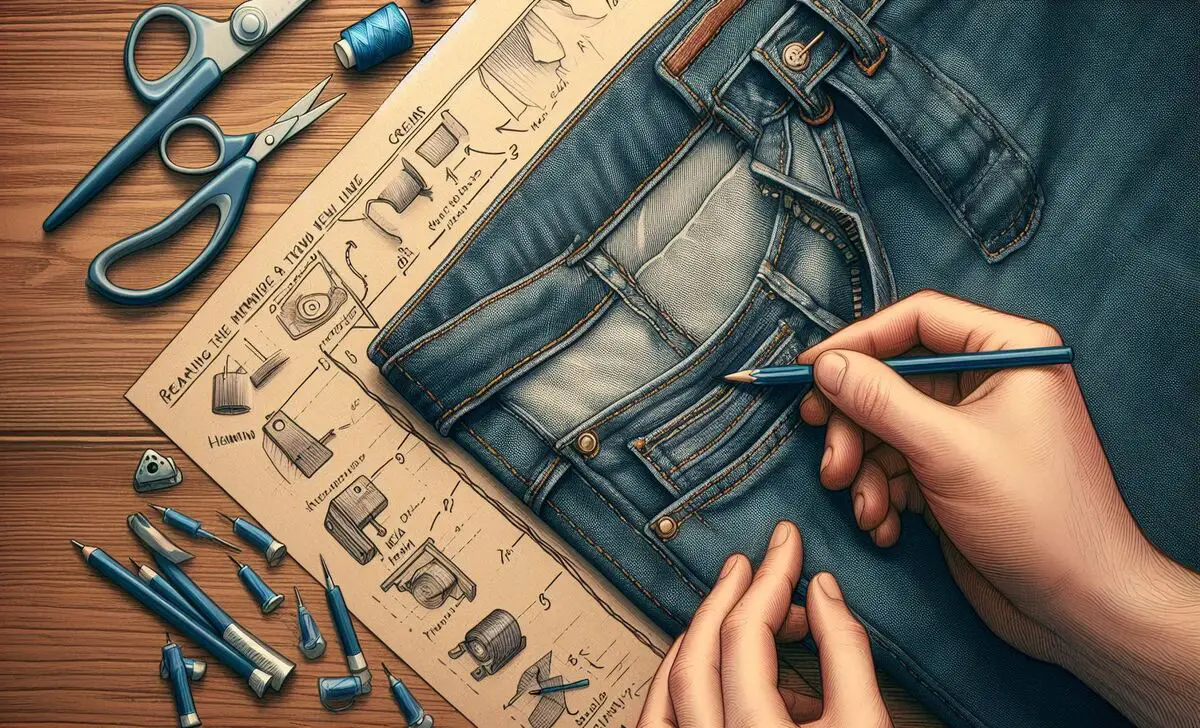
If you’re creating a new hem, cut the jeans about an inch below the marked line. This excess will be folded to create the hem. Fold the fabric to the desired length and pin it securely in place.
Keeping The Original Hem
If you want to preserve the original hem:
- Fold the Extra Fabric: Fold the excess fabric upward inside the jeans, keeping the original hemline intact.
- Pin the Hem: Secure the fold with pins, ensuring the hem sits evenly.
- Stitch the Fold: Use a hand stitch to sew around the folded fabric just above the original hem.
Creating A New Hem
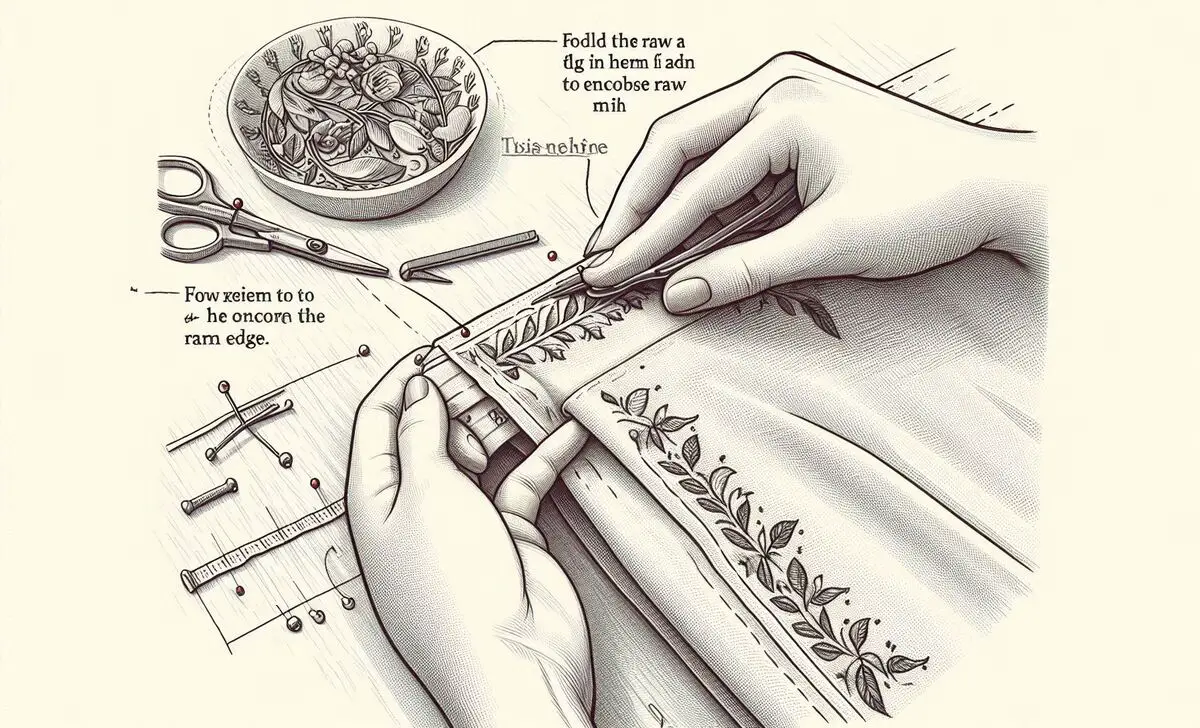
For a fresh hem:
- Fold the Fabric Twice: Fold the raw edge of the fabric up to the desired hemline, then fold it again to enclose the raw edge.
- Pin the Hem: Pin the fold in place, ensuring the hem is even all around.
- Stitch the Hem: Use a backstitch or hemstitch to sew the fold in place. Keep the stitches small and even.
Stitching The Hem
The stitching technique you use can make or break the appearance of your hem:
- Backstitch: Strong and durable, great for thick denim.
- Slip Stitch: Invisible from the outside, ideal for a clean finish.
Finishing The Hem
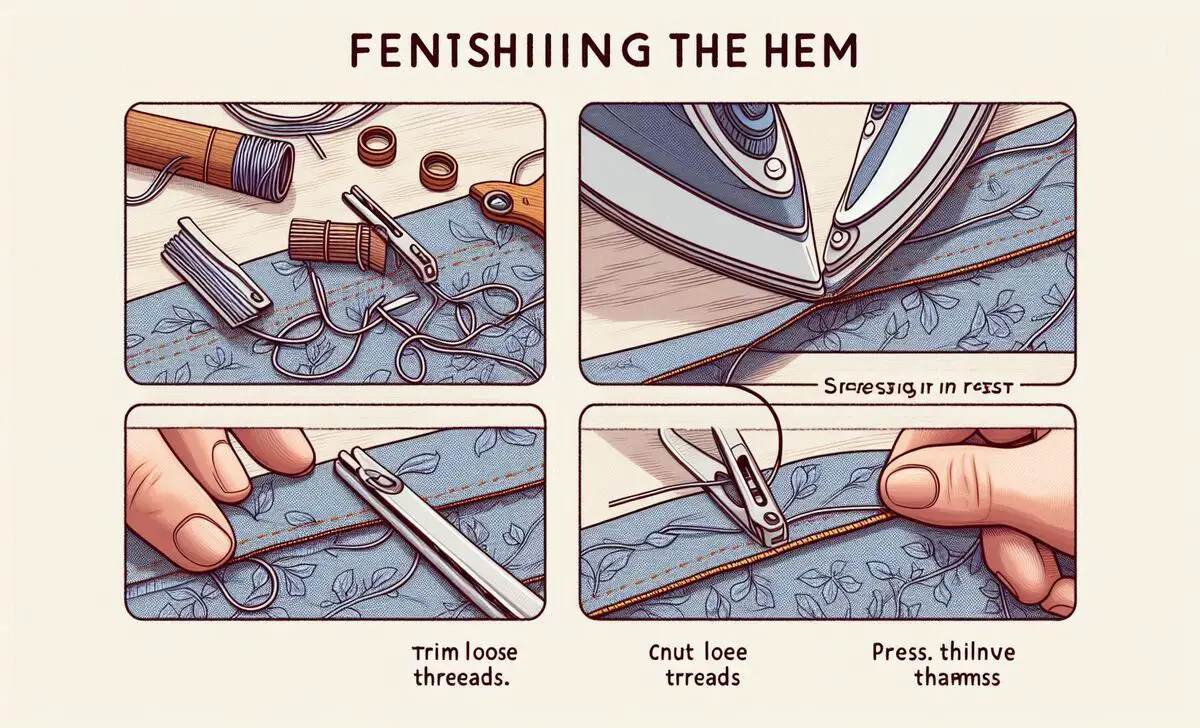
- Secure the Stitches: Knot the thread securely to prevent it from unraveling.
- Trim Loose Threads: Cut off any excess thread for a neat appearance.
- Press the Hem: Press the hem flat with an iron, giving it a polished look.
Common Mistakes To Avoid
- Uneven Hems: Always measure and pin carefully to avoid an uneven hem.
- Wrong Stitch Tension: Too tight stitches can cause puckering, while too loose stitches may not hold.
- Using the Wrong Type of Thread: Always use a strong thread that can withstand the wear and tear of denim.
Tips For Different Types Of Denim
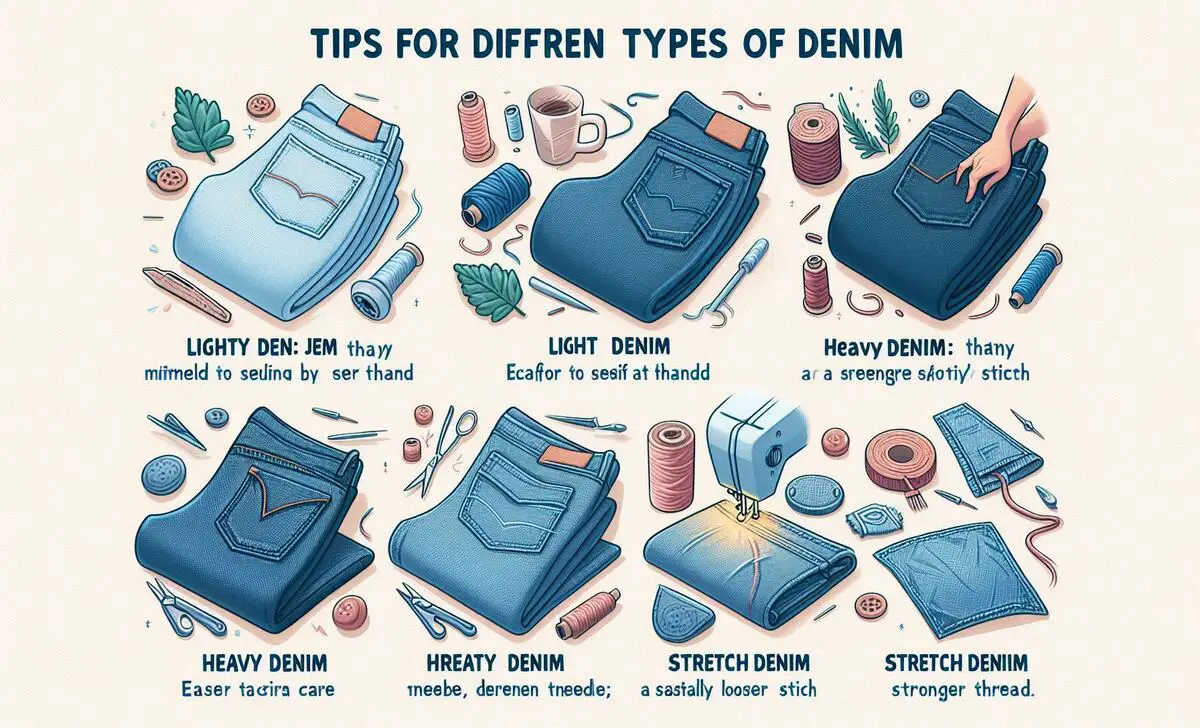
- Light Denim: Easier to sew by hand but may require lighter thread.
- Heavy Denim: This may require extra care, a thicker needle, and stronger thread.
- Stretch Denim: Be mindful of the fabric’s stretchability; a slightly looser stitch may be necessary.
Conclusion
Hemming jeans by hand is a valuable skill that can help you customize your clothing to fit perfectly. With the right tools and techniques, you can achieve a professional-looking hem that suits your style and saves you money. Whether you choose to keep the original hem or create a new one, the satisfaction of doing it yourself is well worth the effort. So, grab your needle and thread, and give your jeans the perfect fit they deserve!
Frequently Asked Questions
1.How Long Does It Take To Hem Jeans By Hand?
It typically takes about 1-2 hours, depending on your sewing speed and experience.
2.Can I Hem Jeans Without Cutting Them?
Yes, you can keep the original hem without cutting by folding the excess fabric inside.
3.Is It Necessary To Use A Thimble?
While not necessary, a thimble can protect your fingers when sewing thick denim.
4.What’s The Best Type Of Thread For Hemming Jeans?
Heavy-duty thread or topstitching thread works best for denim.
5.Can I Hem Jeans With Double-Sided Tape?
Double-sided tape can be a temporary solution, but it’s not recommended for a permanent fix.
6.Can I Hand Hem Jeans?
Yes, you can hand hem jeans using a needle and thread.
7.What Stitch Is Used To Hem Jeans?
Common stitches for hemming jeans include the backstitch, slip stitch, and hemstitch.
8.What Is The Easiest Way To Hem Pants?
The easiest way is to use a sewing machine or double-sided tape for a quick fix.
9.Can I Cut My Jeans With Scissors?
Yes, you can cut your jeans with scissors, but make sure to measure carefully and use sharp fabric scissors.
10.Can You Hem Jeans At Home?
Yes, you can hem jeans at home with basic sewing tools or even fabric glue for a temporary fix.
11.What Is The Best Stitch To Hem Jeans?
The best stitch is a backstitch for durability, or a slip stitch for a more invisible finish.
12.What Is The Proper Length To Hem Jeans?
Hem jeans to the desired length, allowing for any shrinkage or footwear you’ll wear.
13.What Tension Is Needed For Hemming Jeans?
Use a medium to high tension setting on your sewing machine to handle denim fabric.
14.What Is The Correct Length Of Jeans?
The correct length of jeans generally falls just above the heel of your shoe or slightly below, depending on your style preference.
15.What Is An Original Hem?
The original hem is the factory-finished edge of the jeans that you can preserve when hemming.
16.What Is The Easiest Way To Hem?
The easiest way is using fabric glue or double-sided tape for a quick and no-sew option.
17.What Is The Best Hand Stitch For Hemming?
The best hand stitch for hemming is the slip stitch for a clean, invisible finish.
18.What Is An Invisible Hem?
An invisible hem is a type of stitching that hides the seam, creating a clean look without visible stitches from the outside.



